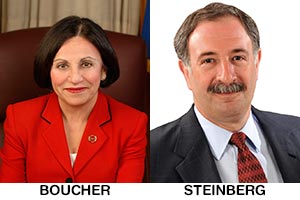Effort to Boost Transportation Funding Slows in Connecticut

Two years ago in February, Connecticut Gov. Dannel Malloy unveiled an ambitious 30-year, $100 billion infrastructure proposal.
This February, Malloy made only a glancing reference to transportation in his State of the State address, saying, “We’ll need to continue investing in a modern transportation infrastructure that meets the needs of both our residents and our businesses.”
Malloy’s plan hasn’t gone into effect, and Connecticut’s infrastructure headaches have only worsened after $50 million of general fund revenue meant for the Department of Transportation was pulled back, putting the Special Transportation Fund that covers DOT’s operating costs in the red. The transportation fund has a $142 million reserve but is projected to run out of money during the 2020s, barring a big boost, stakeholders say.
In the meantime, Connecticut’s $1.5 billion budget deficit has put almost everything else on the backburner.
“The state’s finances are so bad that [CDOT is] going to have scale back a lot of what they’re hoping to do,” Sen. Tori Boucher (R), co-chairman of the Joint Transportation Committee, told Transport Topics. “We have a lot of work to do, but we have to prioritize. The governor’s plan was totally unrealistic because the proposals of how to pay for it didn’t go anywhere.”
Rep. Jonathan Steinberg, a Transportation Committee member who’s more supportive of Malloy, a fellow Democrat, joined Boucher in her skepticism of much getting accomplished for transportation in Connecticut this year.
“We ignored a lot of state good repair projects for a long time, so we’ve got a big backlog,” Steinberg told TT. “On top of that, we have some gigantic capital projects that are going to cost billions of dollars [such as repairing or replacing aging and congested sections of Interstate 84 in Waterbury and Hartford and railroad bridges in Fairfield County that predate World War I]. We will continue to hold the governor’s feet to the fire [on transportation funding].”
Boucher noted that a lockbox amendment fell 14 votes shy of three-quarters of the 140-member House of being passed on to the voters in December 2015 for their approval. However, Steinberg, who joined her in voting for the lockbox, said it wouldn’t necessarily be the solution to a transportation network that Boucher said probably deserves a C-.
“I view it as more of a symbol than an actual necessity,” Steinberg said. “You have to control what goes in as well as keeping it there. It doesn’t make a difference which bucket the money is in. Is there enough money in all the buckets?”
Among the suggestions for how to add money for transportation are raising fuel taxes, which are already higher in Connecticut than in all of its neighbors except New York, and bringing back tolls which were eliminated in 1989.
“There’s a common desire among many leaders to get money from out-of-state drivers who use our highways, and tolling can accomplish that,” said Joe Sculley, president of the Connecticut Motor Truck Association, who noted that Steinberg has proposed adding a variable pricing lane on Interstate 95. “It’s early in the session. We’re going to see how many of these issues can get tackled and in what kind of timeframe.”
Boucher doesn’t expect the effort to restore tolls to go very far.
“I think people uniformly feel the gas tax is a fair way to pay for transportation,” said Boucher, adding that the state levies the third-highest taxes and its pension problems are the nation’s second-worst. “It would be very hard to digest another increase, but if people had to choose, they would see that as the lesser of two evils. For commuters, tolls would be like a pay cut. I have 500 e-mails against and only four or five for bringing back tolls. And those who are for it say they are, only if we have a lockbox that ensures that the money goes directly for transportation purposes.”

